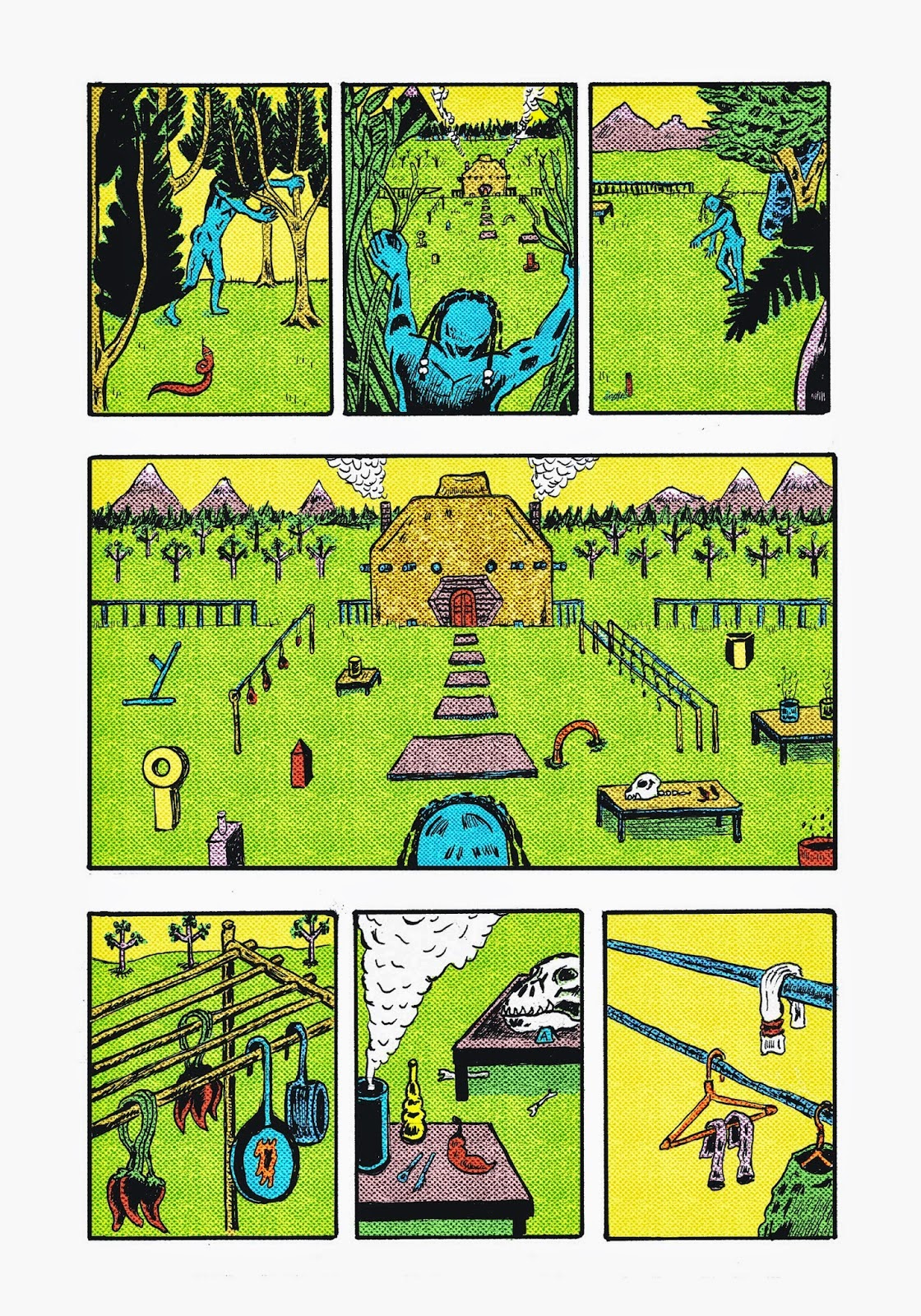Ed Steck and Bill Wehmann, Pacific Reverb Society, Pittsburgh (USA), 2014, 32 pages, full color, $ 8.
Bill Wehmann is the author of mini-comics as Death of Spot and Would You Still Love Me in Black and White and has recently begun a collaboration with the writer and poet Ed Steck for the series Abyssal Yawn, published by Wehmann's Pacific Reverb Society in an elegant full color comic book with heavy card stock covers. The first issue introduces to a story that recalls the Sixties and Seventies Marvel cosmic sagas as Stan Lee's and John Buscema's Silver Surfer and Jim Starlin's Warlock, updating the contents and adding irony and sociopolitical metaphors. The main character is a nameless hero made of the same substance of the outer space, a sort of Silver Surfer 2.0, with rasta braids and without underwear. After being freed from the "imprisoned pocket of eternity" by a mysterious entity, he begins his trip through eternal time, "suffering the peril of the everyday wanderings of a celestial nomadic universal being".
The narrative-heavy captions describe step by step the journey of the protagonist until he reaches a planet called Berkornrog, which in reality is nothing but the mental projection of Max, a two-legged dog who walks around hooded while smoking a pipe. Max informs him of an intergalactic conspiracy leaded by Mother Sky Corporation, a company that is jeopardizing the whole existence of life with illegal drilling operations, depriving the universe of the celestial milk, "a fluid that enriches the inter-connected channels between parallel timelines".
Max invites the main character, now renamed Birch Twig, to embrace his cause and submit him to an initiation rite that includes eating a stew of imprisoned planets and the brain of a sick animal. The ritual will break his blue shell, turning him into an orange creature, as it will happen to the same Max. The two will launch themselves in the outer space to find Moter Sky Corporation on the cry of "Metal bodies of purity ride on".
The large use of captions and the long digressions take back to comics of other times, but here there is also an ironic and underground approach. The elaborate and weird plot has the strong point - more than in the sci-fi quotes and in the inner coherence - in the intentional accumulation of odd elements. The part set on Berkornrog is the most visionary and brings out the effective use of color and the raw and incisive line of Wehmann. The planet presents objects of our daily lives close to exotic and tribal ones, giving a feeling of family strangeness, in the classic Star Trek tradition. As in the previous Death of Spot, not surprisingly made for the Comics Workbook Composition Competition of last year, the narrative skills of the Pittsburgh-based cartoonist are enhanced when he uses a well-defined grid of panels (six, nine or even sixteen). The splash-pages are also plain but effective, able to fascinate with a few elements. Metal Bodies of purity read on, give us the second issue!




Nessun commento:
Posta un commento